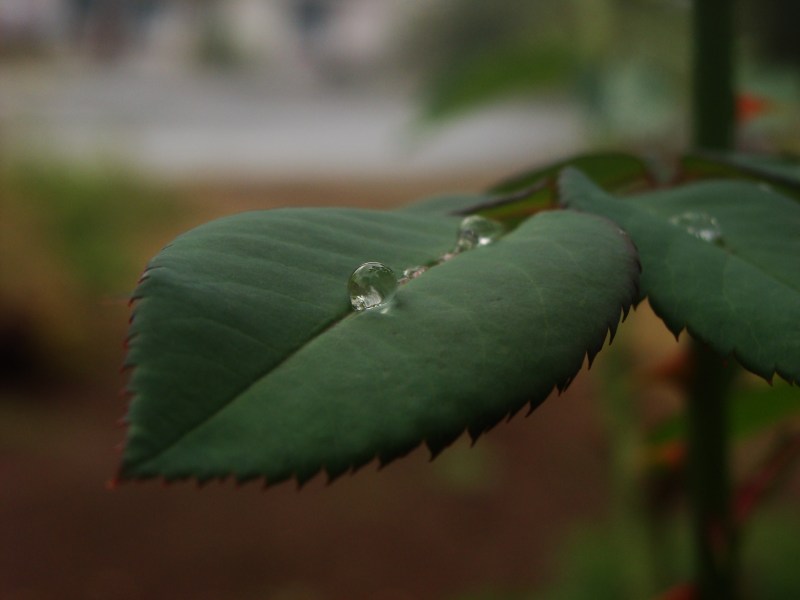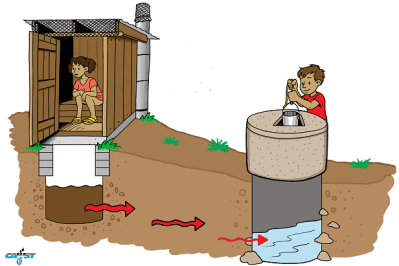
It seems obvious that if you dig or drill into the soil, at some point you will hit groundwater. Drill deep enough and you will reach an aquifer containing enormous amounts of fresh water. After this you can just pump water out of these wells and you will have fresh water aplenty. Or so was the thinking among many for the longest time. As enormous the fresh water reserves in the form of groundwater are – with most liquid fresh water being groundwater – we can literally empty them faster than that they’ll refill.
As the Dust Bowl disaster painfully showed in the 1930s and drought along with surface subsidence issues as in e.g. California’s Central Valley shows today is that we cannot simply use the soil and groundwater and expect no consequences. While the 19th century saw many fresh settlers to the West’s arid and semi-arid regions like California believe in the ‘Rain follows the plow‘ mysticism, the 20th century and these first few decades of the 21st century taught us that tilling the soil and drawing groundwater for irrigation does not change an arid climate into a lush one.
Perhaps ironically, even with increasing droughts, most human settlements use stormwater drainage and combined sewage systems to carry rainwater away, rather than letting the groundwater recharge naturally. Fortunately, more and more regions these days are seeing the necessity of managing groundwater.
Waste Not, Want Not

How much one values rainwater and snow melt-off depends largely on how much one has of it. For someone like myself who grew up on a farm in the western regions of the Netherlands – amidst soggy clay and ditches that led straight to pumping stations – capturing rainwater wasn’t a concern, while finding ways to prevent flooding was more essential.
This equation changes completely when the rainwater your area receives is perhaps only barely enough to sustain that year’s crop, with irrigation from a nearby river, or from deep wells, being required to keep crops in the fields from dying. For many cultures over the centuries, the use of dryland farming has been essential to deal with an arid climate. What this means is to minimize evaporation by limited tilling of the soil, increasing spacing between crop rows to minimize competition for limited soil moisture, and growing crops or cultivars that are adapted to an arid climate.
Which is not to say that it’s not possible to grow just about any crop or the like in even a desert environment. For thousands of years now, humans have used irrigation to grow crops in places that otherwise would be completely off-limits. The same is also true for humans themselves, as we too require fresh water on a daily basis, requiring us to draw from the same rivers or groundwater as our crops.
Here the lesson is that the less fresh water is available, the more important it is to capture every last drop of rainwater, and to use it as sparingly as possible. Another essential consideration here is that even if drainage systems don’t immediately whisk the water away, soil structure is essential for allowing rainwater to soak into it. After a prolonged drought, the pores that normally exist between soil particles and that allow for moisture to reside between them will have mostly vanished.
The effect is that this super-dry, ultra-compacted soil will not easily absorb rainwater, which is perhaps ironically what enables flash floods. What one can do here is to give the soil more time to absorb the moisture, through the use of ponds, swales and similar structures in the landscape that prevent run-off and maximize the soak time of the soil. Not only will this increase the amount of moisture in the top level of the soil column, but more crucially assist in groundwater recharging.
That Sinking Feeling

In addition to capturing rainwater and run-off from snowmelt for irrigation, drinking water and recharging groundwater levels, it’s increasingly common to inject treated water back into aquifers, rather than releasing it into rivers and other surface waters. A major benefit of this is that it helps to counteract the subsidence of the soil, which is a common issue when water is extracted faster from an aquifer than it replenishes itself.
Mexico City is an example of a sinking city that is suffering the consequences of overdrafting from the aquifer which it was built upon. As a result the city is sinking at a rate of more than than 15 centimeters per year, while water shortages keep increasing the pressure to draw ever more water from the aquifer. Possibly worse is overdrafting from an aquifer for a coastal region, as this can result in saltwater intrusion, where the salt water flows in and contaminates the fresh. The worse this becomes, the more likely that the aquifer may have to be abandoned completely, or require intensive treatments like desalination.
All of which should make it clear that aquifers, as well as groundwater in general, is a precious resource that should be treated carefully, so that it can be a sustainable resource. This leads us to another major risk factor, namely that of pollution.
Keeping It Clean

Even though the soil matrix will act as a kind of filter, this tends to be only good enough to filter out larger particles. Pathogens, heavy metals and various chemicals may be contained in run-off water. In many regions the use of septic drain fields, cesspits and latrines is quite common, all of which risk introducing pathogens into the groundwater that may end up in the water retrieved from poorly sited wells.
Such types of groundwater pollution have led to the spread of disease and similar in the past, and continue to be a heated subject of debate. The practice of fracking for natural gas involves the injection of chemicals into the rock that often ends up in groundwater and has led to lawsuits and medical studies. Ultimately there is the dawning realization that groundwater is something we all end up sharing, not unlike the water in a public swimming pool.
To prevent pollution from rainwater run-off ending up in groundwater, the concept of bioswales has been introduced fairly recently. This iterates on the basic concept of swales by adding a filtering function, which would allow it to retain heavy metals, silt and debris. By picking specific plants to grow in these bioswales, this growth can act as a natural filter, while also allowing for debris to settle. Heavy metals would be mostly retained in the sediment that settles in these bioswales, allowing for periodical removal and replacement of this sediment for disposal.
In a study of an existing bioswale that has been in place in southern California for a few years, Evans et al. (2018) analyzed the rate at which zinc, lead, cobalt and manganese were retained in the bioswale’s soil. They found that a significant amount of these metals were sequestered.
A Shared Resource
Ultimately fresh water is a precious resource that, if managed carefully, can bring prosperity and health to not just crops and people, but also the environment in general. By using ponds, swales and other retention structures people in semi-arid and arid regions can optimize the small amounts of rainfall, while not burdening aquifers and nearby bodies of water too much, especially if combined with dryland farming.
By injecting stormwater run-off into aquifers, and letting it soak into the soil rather than carrying it away into drainage systems, the impact of droughts can be made significantly less severe, while preventing permanent damage from letting aquifers dry out. Finally, by preventing groundwater pollution, we can ensure that the water that we pump out of wells is not laced with heavy metals, pathogens and similar unpleasantness.
As long as we learn to accept that rain and plentiful groundwater aren’t things we can necessarily count on, and may require effort from our side to maintain or make optimal use of, things should work out fine.
Groundwater: Management Of A Much Neglected Lifeline
Source: Manila Flash Report
0 Comments